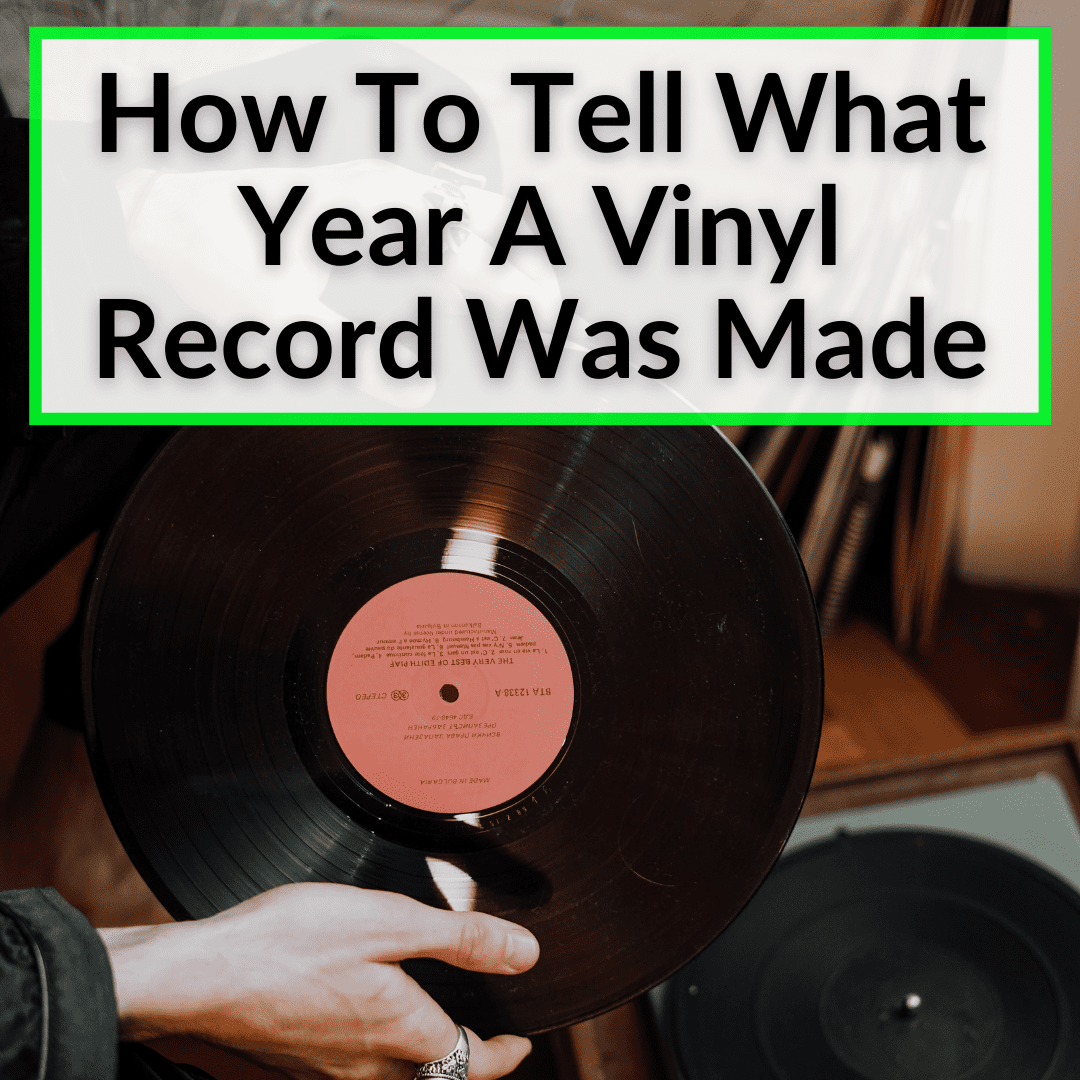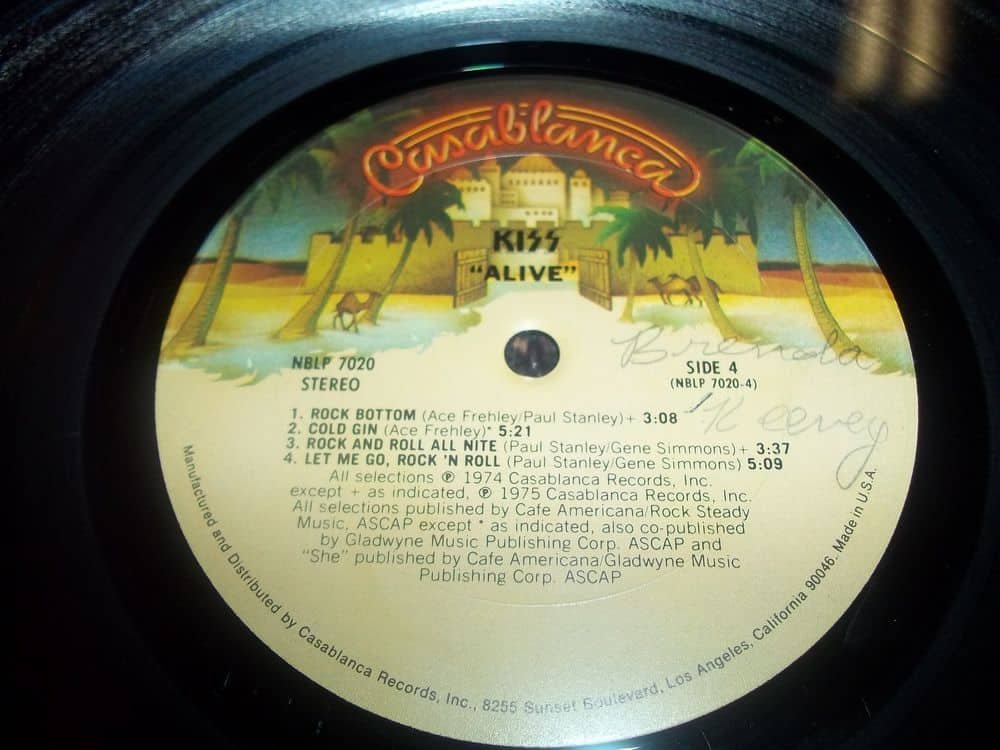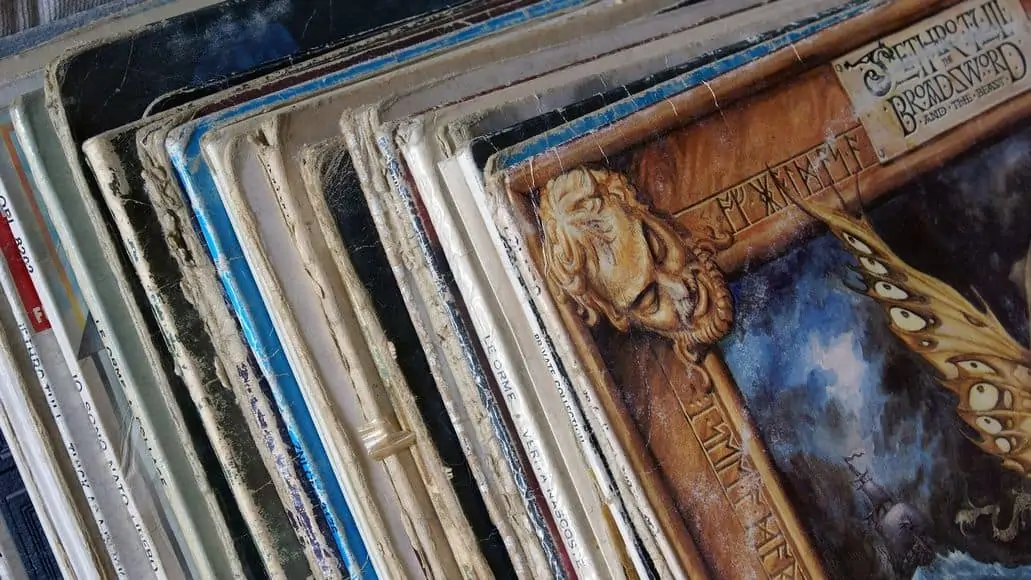
And oftentimes it is.
But there are also cases where it seems impossible to figure out what year a vinyl record was made.
That’s why there are people who get paid to research this information for you.
But if you know where to look, you can able to find it yourself.
Even in some more difficult cases, where the information is not written anywhere on the disc or the accompanying materials.
That’s when you get to play detective. Which can actually finkind of fun!
Keep reading to learn the different places to look to find the release year of a record, and how to research it, if that information is not provided anywhere.
Contents
How To Tell What Year A Vinyl Record Was Made
We’re going to begin by covering all of the places to look in order to find the release year. If you can’t find it anywhere, move on to the section about researching this information.
But before all of that, there are a few things you need to know about the copyright information on vinyl records. It’s not always straightforward.
Things To Consider Before Starting

Keep in mind that the copyright of an album may not always be the same as the release year. Some reissues are copyrighted when they are first released, but the repress is released years later.
In that case, the original copyright may still be on the artwork, but in some cases, it is hyphenated like books are. For example, it could say copyright 1979-2022, or something similar. This does make it difficult if you like to organize your vinyl records by release year.
Phonograph Copyright Vs Copyright
There are 2 different kinds of copyright on vinyl records. You have the lyrics and artwork symbolized by the c in a circle ©, and the phonograph copyright symbolized by a p in a circle (p).
Keep in mind that the p in a circle is not just used for vinyl but any physical sound recording media like CD or cassette, etc. The reason this is important is that they can differ on your album cover. The one that matters to what year your release was produced is the p in a circle.
Check The Album Cover
The most obvious and conspicuous place to find the date is one the cover (usually not the front, but the back). The date is not always there, but it is one of the most common places to find it.
You can check on the bottom of the back cover, where there is usually some text like copyrights and other notices. It is important to note that no laws or ordinances mandate that the release date needs to be included on the cover, but many releases have the release year on the back of the cover art anyway.
Not all records you acquire will have the original cover art (they get lost and unsheathed by kids and adults who are evil). When you don’t have the original cover art, there are some additional ways to try to find the release year.
Check The Album Insert
The vast majority of vinyl records come with an insert that either has additional artwork or lyrics on it. Some just have a blank media sheath that holds the record and no artwork.
Chances are high that the album you are trying to date will have an inner sleeve. In this case, you can check it for the copyright information and/or the release year.
On the insert, the release information is probably going to be on the very bottom, with the address of the label and the other legalese text. Look for the copyright symbol to quickly find it among all the other text.
Check The Label On The Record Itself

The copyright information is usually on the label. The label is the piece of paper that is stuck to the middle of the record and contains the names of the songs, the artist, and the record label name.
The release year should be on the label somewhere, but this is not always the case. Usually, it will be on the bottom of the label text, under the song names and artist names, in a smaller less conspicuous font.
Check The Dead Wax
The dead wax is the runout wax on your record that has no sound on it after the program material is over. There is usually some writing here. Sometimes it will be a code of some sort, like a catalog number, or just some text the artist or the label wanted to put there.
Sometimes, but rarely, there will be a copyright notice on the dead wax. More than likely it will just be some kind of identifying attribute you can use to uncover the release year. This brings me to one of the most important bits of this whole article.
Check The Spine
Yes, records do have a spine. The spine is the back of the cover where the front and back covers come together like the spine of a book. The spine is very small and hard to read when you get old, but when you were young you could read them.
The fact is that there is information on the spine, like the title, the label, the catalog number, and the copyright date (sometimes but not always). If you get lucky you can find the date there.
Become A Detective

Sometimes, you won’t be able to find the date anywhere on the vinyl record or the accompanying cover. If that is the case, you will have to become a detective and uncover the release date through research. Here are some ways you can find the date.
Get To Know Discogs
It goes without saying that you will need to familiarize yourself with Discogs.com, which is the most comprehensive database I know of regarding vinyl records. It is an indispensable resource for buying, selling, and finding the market value of a record.
This gets easier with practice, but it is super annoying if you are new and just want to find the date, so you can get the value of it and sell it. The thing is, sometimes there is no easy way to find the date printed on the album, and if there is a date, it may not be the only identifying attribute to discern which actual pressing you have and, finally, the value of it.
It’s About Value
At the end that is all this is about, knowing the value. We will cover this topic later. For now, it is important to be prepared that you may have to dive into the fun world of album pressing anomalies, attributes, catalog numbers, record label archiving habits, runout matrix numbers, and more.
This subject is dense and nuanced, so much so that there are specialists that get paid good money to research your record for you. But for our purposes today, here are some things that will help you date your record, if you can’t find the actual release date anywhere.
Even if you can find it, it is good to know this stuff, because there is more than just the date that gives an album its value.
Catalog Number
Generally, this is the biggest and most easy-to-spot number on a release. You can find it on the spine back cover, label, or all three. Labels use catalog numbers to identify releases, and they can be useful to discern the date and value of a release.
Label Matrix Number
You can usually find the label matrix number in the dead wax. It is another way for pressing plants and labels to identify the release within their organizations. This can be very helpful when using Discogs to try to identify your release year.
Cover Art Changes And Anomalies

Sometimes represses will change the artwork completely. This makes it easy to narrow down the date of your release. If you have version A or B, it is not hard to quickly get closer to the answer.
Other times there will be small changes with each subsequent release that a normal person will not notice when looking at two of the ‘same’ albums.
It can be a color change on the edges or a word or two on the lyrics sheet, for example. All these things can be used to identify your release and thus find out the year it was pressed.
Vinyl Color
Much like anomalies and artwork changes, you can also use vinyl color to find out which pressing you have. For example, a release could have originally been black vinyl, but they made a blue marbled vinyl version just for record store day (thus artificially inflating the value of the RSD release).
Side note: if you want to step in a pile of dog poo, just research record store day to find a surprising amount of anger and vitriol from record nerds. It will be fun.
It bears repeating that you can find all you need on Discogs.com.
Find Vinyl Record Release Year: Final Thoughts
Usually, you will be able to find the release year of a vinyl record either on the disc itself, or on the cover or sleeve in which it came. If not, you can still usually find enough information there to figure out the release date with a bit of research.
Of course, things are easiest with the top selling vinyl records. With older and less popular albums, this can all get a bit more complicated. Sometimes it requires a ton of time and effort, which is why some people just hire someone to do this task.
I was always baffled as to why U,S album and single vinyl releases never had the date of issue on the label. All records from the U.K etc. had the date clearly printed on cover and label!
Hello
I’m wondering my Animals pink Floyd is first pressing
All it states is 1977 pink Floyd, music
Under that has
Stereo SHVL 815
Under that it has
SHVL 815A 331/3
Many thanks
James
I have a 12-album of 12″HMV vinyl box set in an album in mint condition, doesn’t look as though have ever been played., they appear to be unplayed judging by the discs, how can I tell exactly when the were pressed
Buy a book that will list all records and the year each copy was mad. This is very important because it can change the value a great deal .there are several on the market look on Amazon
This really didn’t help at all. I have a number of Beatles albums (Please, Please, Me is sealed) from sometime in the past and a number of the same album. I do not want to open it up to see the label. How do I go about that? Actually, I have a large number of Beatles albums that have never been played and I have no idea when they were produced.
Buy a record guide at a book store there are many good ones